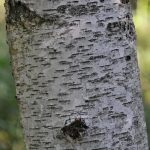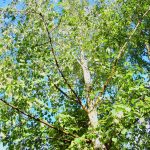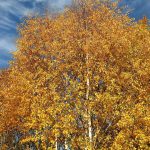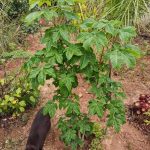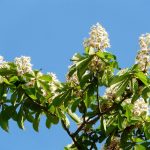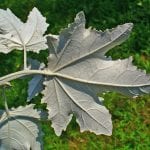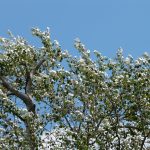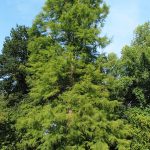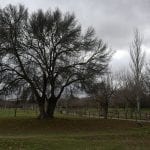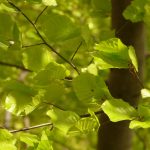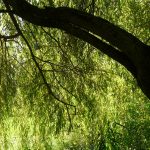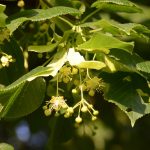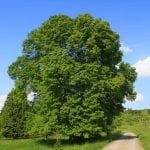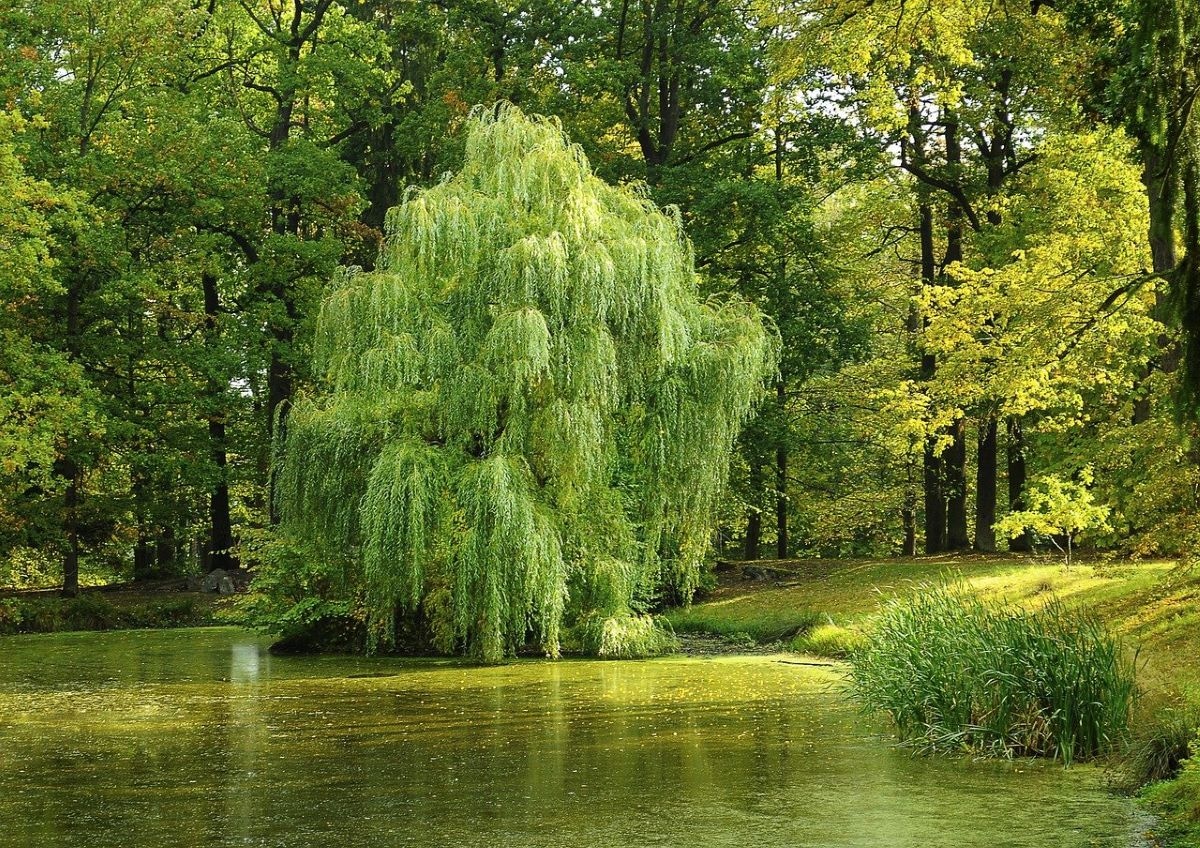
What are the trees that grow next to a river? In Spain we have a few, but in the world there are many more. Knowing their names can be very helpful when choosing the species for our garden, since if our soil is always humid and the temperatures accompany it, they will surely be able to do well in it.
But yes, it is important to take into account that these plants have very long and strong roots; they have to be to be able to stand in the river. Therefore, they should only be kept in areas far from where the pipes have been laid or the ground has been paved.
Birch (alba betula)
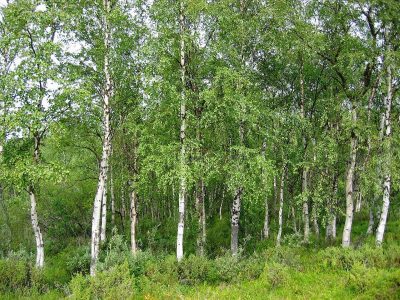
Image - Wikimedia / Percita at Flickr
El common birch or European is a deciduous tree that reaches 18 meters in height. It develops a columnar trunk, with white bark. The leaves are green on the upper side, and lighter on the underside.
It is one of the most common trees that grow next to a river in Europe and Asia, although We will only find it in those regions where the earth is acidic. Supports up to -20ºC.
- Image - Flickr / José María Escolano
- Image - Flickr / Lluïsa Nuñez
- Image - Wikimedia / ImagesFree4U
Horse Chestnut (Aesculus hippocastanum)
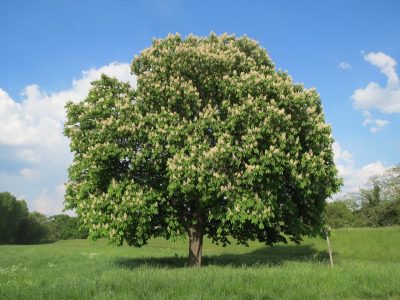
El horse chestnut It is a great tree, which can reach 30 meters in height and that also develops a wide crown, from 4 to 6 meters. The leaves are deciduous, and very large, since they measure more than 20 centimeters wide x high. These have between 5 and 7 green leaflets, but they turn yellow or reddish in autumn before falling.
It grows in Europe, specifically in the Pindo Mountains and the Balkans, but is cultivated in many other parts of the world. Prefers well-drained and moist soils (not flooded), and can grow in limestone. Supports up to -23ºC.
- Copy of my collection.
- Copy of my collection.
Common or white poplar (the white)
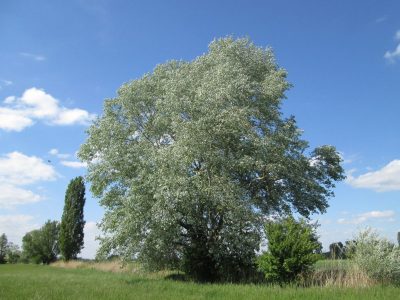
Image - Flickr / Andreas Rockstein
El poplar or white poplar it is a big tree, which develops an almost straight trunk up to 30 meters high. The leaves are deciduous, with a dark green upper surface and a white tomentose underside.
It is a native plant of North Africa, South and Central Europe, and Central Asia. Likes temperate climate, with cold winters with frosts and hot summers. Resists up to -20ºC.
- Image - Wikimedia / H. Zell
- Image - Flickr / Andreas Rockstein
Swamp cypress (Taxodium distichum)
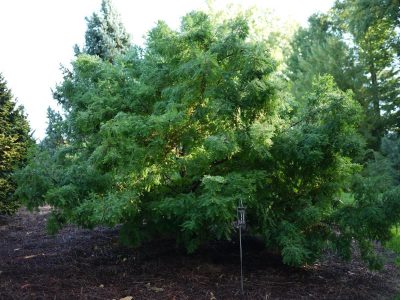
Image - Flickr / FD Richards
El marsh cypress or bald cypress is a deciduous conifer that can reach 40 meters in height. It has a more or less straight trunk, and also when it is in marshy terrain it develops aerial roots called pneumatophores, thanks to which it can breathe. In autumn its leaves turn yellow and then fall.
It grows in the wetlands of the United States, specifically from the southeast. But its ornamental value is so high that it is also grown outside the country. Supports up to -18ºC.
- Image - Wikimedia / Batsv
- Image - Wikimedia / Darkone
Narrow-leaf ash (Fraxinus angustifolia)
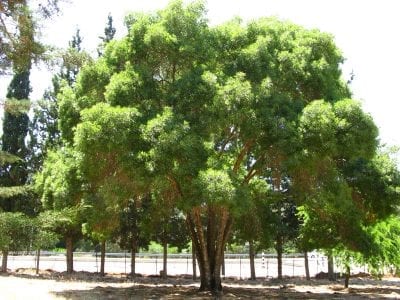
Image - Wikimedia / Arielinson
El narrow-leaf ash or southern ash is a fast-growing tree that it can reach and even exceed 30 meters in height. Its crown is also very wide and highly branched. The leaves are green on the upper side and glabrous on the underside, and fall during the fall after turning orange.
It lives on the banks of the rivers of southern Europe, North Africa and Southwest Asia. And the best thing is that it is very resistant to cold, as it can withstand intense frosts down to -23ºC.
- Image - Wikimedia / Assianir
- Image - Wikimedia / David Perez (DPC)
Is (Fagus sylvatica)
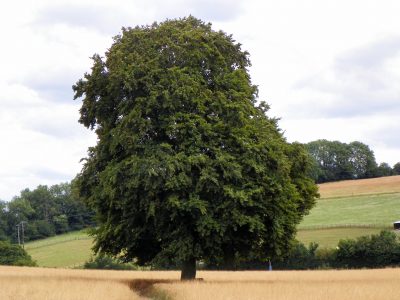
Image - Flickr / Peter O'Connor aka anemoneprojectors
El common beech it is a deciduous tree that can reach 40 meters in height. It is a plant that, although it grows slowly, has a life expectancy of about 250 years. Its trunk is straight, and it has an oval crown from which simple green or brownish leaves sprout depending on the variety.
Originally from Europe, in Spain we can find it in the Pyrenees and the Cantabrian Mountains, but outside these areas it is very, very rare if we do not have the specimens that are grown in the gardens. Although it lives near rivers, it is important to clarify that it does not tolerate flooded soils, so should only be planted in moist, well-draining, slightly acidic soils. Supports up to -20ºC.
- Fagus sylvatica 'Atropurpurea', from my collection.
- Image - Wikimedia / Willow
Weeping willowsalix babylonica)
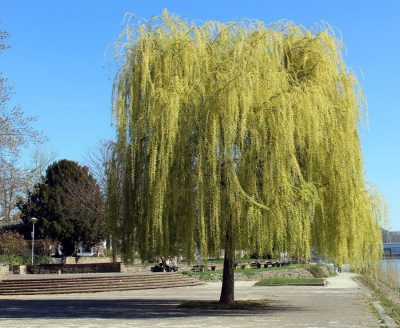
El weeping willow it is a deciduous tree with an elegant bearing, which develops a very wide crown with hanging branches. It can measure up to 12 meters in height, and has lanceolate leaves that fall in winter, but not before turning yellow.
Native to East Asia, today it is grown without problems in temperate regions of the world. But yes, you have to take into account that needs a lot, a lot of waterHence, it is planted near ponds for example. Supports up to -20ºC.
- Image - Flickr / B + Fouzy
Common linden (Tilia platyphyllos)
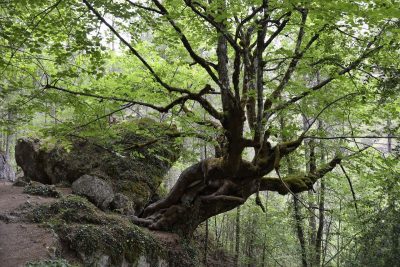
El common linden, also known as big-leaved linden or simply linden, It is a tree that reaches 30 meters in height. It has a more or less straight trunk, although it twists with age, and a highly branched crown with ovate green leaves. In autumn they turn yellow until they finally fall.
It is a tree native to Europe, where it lives in mixed forests almost always near a river or swamp. It can live in limestone soils but only if they have good drainage. Supports up to -20ºC.
- Image - Wikimedia / Radio Tonreg from Vienna, Austria
Which of these trees that grows next to a river did you like the most?
